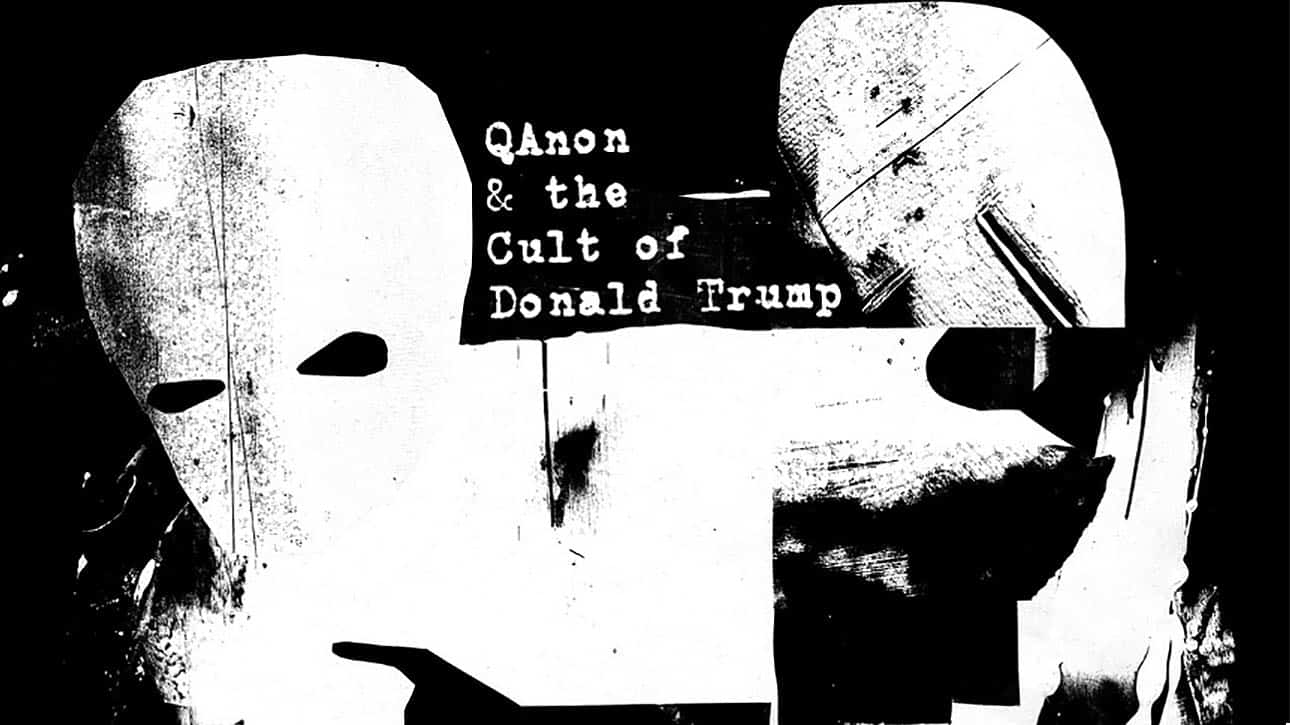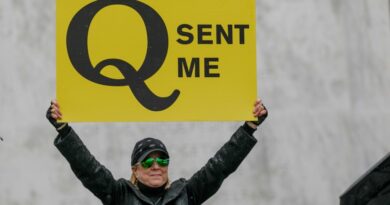‘Operation Mindfuck’ Wades into the QAnon Muck

I live in a mostly left-leaning area in the Northeastern United States. Ninety percent of my precinct voted for Joe Biden in the most recent Presidential election. This morning, I was walking to a coffee shop when a man sitting in a folding chair on the sidewalk, smoking a cigarette, informed me that the federal government was going to start arresting patriots. Very soon, he promised.
QAnon is a confusing phenomenon. What started as a fringe Internet conspiracy about Democrats drinking children’s blood took hold of members of the Republican party, activated conspiratorial thinking about the coronavirus, and eventually led to an attempted insurrection at the US Capitol. It took the right-wing nutjob concept several degrees beyond its illogical conclusion and is a looming threat today, stretching from the heart of America to my small liberal town.
Because QAnon absorbs the worldviews of those who succumb to its radical ideology, is increasingly prevalent, and directly affects political and social life, it’s crucial to understand how to fight it. Like most conspiracy theories, QAnon has built-in redundancies for countering challenges, thereby insulating believers from criticism. Looking for guidance, I turned to Professor Robert Guffey’s Operation Mindfuck: QAnon and the Cult of Donald Trump.
The text is divided into three parts. In the first section, Guffey traces the origins of QAnon to older conspiracy theories, from UFOs to the blood libel. Part two details QAnon’s political position, describing how it shields corporate fascism from scrutiny and gives the Republican party a stable power base. The final and longest section is a narrative weaving from President Joe Biden’s election, through the January 6th riot, to America’s cultural and political climate up to mid-2021.
Relying on a QAnon talk show called B2T as a touchpoint (and quoting from it extensively), Guffey traces QAnon’s mobilization of political violence and the movement’s lack of accountability for wrongdoing. Each separate section was originally published elsewhere (the first in Salon, the second and third in The Evergreen Review). Little is done in Operation Mindfuck to describe how these discrete concepts add up to a cohesive vision of QAnon.
Guffey’s postulation of the problem is that QAnon followers are beyond reasoning. He states that they are “clearly the product of incessant brainwashing,” and so “no amount of logic, common sense or reason can combat such convoluted delusions.” This brainwashing is possible, he argues because people are in a vulnerable position. There are real conspiracies – the manipulations and deceits of powerful corporations – that disenfranchise the average person. QAnon takes advantage of the disempowered feeling that the modern capitalist order creates in many average citizens. This is an epistemically sympathetic position: QAnon believers are being taken advantage of, and no amount of reasoning will convince them they’re under the influence of a cult. It’s a complex puzzle to solve.
Operation Mindfuck does not attempt to thread that needle. While Guffey acknowledges the confusion and despair that leads someone to QAnon in the first place, the smarmy dismissiveness of the prose strains my belief that Guffey believes in that position, such as the moment he offers the following Harlan Ellison quote during his description of QAnon’s rise: “The two most common elements in the universe are Hydrogen and stupidity.” Second, Operation Mindfuck is mostly dedicated to tracing QAnon’s tropes to earlier conspiracies; while there are certainly interesting connections to be made there, pointing out QAnon’s lack of originality is not a solution to redeeming the supposedly brainwashed believer. Operation Mindfuck poses a perplexing and nuanced problem but offers no way through it.
In more than one instance, Guffey demonstrates outright contempt for those whom he had painted as vulnerable and exploited. To conclude a fake monologue from a typical believer, he writes: “Trust in Q and Donald! Only they know what’s right for us! Isn’t that right, Martha? Martha? Where the hell’re you going with that suitcase?”
Or, consider this excerpt from late in Operation Mindfuck, which describes a patch emblazoned with Bible verses that was sold to Q believers as a way to ward off COVID-19: “You see? The Creator’s holy words themselves can heal any illness, including COVID-19… a 3×7 pack of Biblical Skin Sigils costs only $21.98. The shipping is free, and you have a 100% money-back guarantee for a full sixty days. What’re you waiting for? Why not give them a chance? What do you have to lose?” Well, we know people died as a result of anti-vaccine misinformation, so there’s quite a lot to lose.
Sacrificing empathy for a cheap laugh subverts my faith in Guffey as someone who claims to understand the position of those manipulated by QAnon. Guffey’s liberal quoting of Hunter S. Thompson indicates that he admires a fast-and-loose journalistic persona. Thompson’s stance can either be revelatory or dazzlingly immature, depending on one’s perspective. Generally, I’m neutral, but in this context, the impersonation doesn’t square up with Guffey’s description of QAnon as a problem. If believers truly have been taken advantage of, then mocking them gets us where exactly?
Guffey’s investment in pointing out the wrongness of QAnon takes up a substantial portion of Operation Mindfuck, but it does not square with his description of the average QAnon believer’s intellectual position. Why would one go through great pains to point out the plagiarized elements of QAnon mythology when such complaints would never move someone who is trapped in the echo chamber?
Guffey’s rationale for this line of inquiry is that “if more people understood [the origins of conspiracy theories], perhaps they would be a little more skeptical when they see these theories being strategically repackaged as political propaganda aimed at a new generation of easy marks.” This line of reasoning works for those of us who have not fallen victim to a scheme like QAnon but does little to address those who have already bought in. For all the urgency Guffey builds up in the latter third of Operation Mindfuck about the risks of QAnon, it seems like the latter population is of urgent concern. But the vast majority of the text is fighting a completely different battle.
Some of Guffey’s commentaries are interesting. For example, he lays out how one QAnon leader drew baseless, symbol-based leaps between the late sex offender/financier Jeffrey Epstein and sitcom actor turned talk show host Ellen DeGeneres. (Epstein’s island had palm trees; DeGeneres’ set has a mural with palm trees.) Guffey’s commentary here goes beyond merely pointing out the illogical nature of the relationship; he points out that the symbology is a “red herring that merely deflect[s] attention from the real story, which is that Epstein succeeded in trafficking young girls on a horrific scale and that this trafficking ring was, in turn, being used to collect blackmail material against some of the most powerful people on the planet.” He’s right; it’s an alarming concept that does not get as much play as conspiratorial thinking.
Another one of Guffey’s more persuasive concepts is QAnon’s re-appropriation of countercultural concepts. He lays out a history of the anarchist trickster, bringing in the Dead Kennedy‘s Jello Biafra and (obviously) Hunter S. Thompson to illustrate how political hijinks have long been a mode of interrogating the status quo. Then, he illustrates how QAnon followers have placed Trump’s utter disregard for, well, everything into the same trickster role. This time, though, the madness is on the side of Christian conservatism, leaving the left with essentially nowhere to go.
Unfortunately, these lucid moments in Operation Mindfuck float in the ether, as the book lacks an overarching concept. While I believe Guffey is right in saying that QAnon believers have been exploited, the book itself does not respond appropriately. If believers will not be convinced by explanations of why QAnon is built on a house of cards, then breaking down its connections to previous conspiracies is not the way out of this mess. So I walk past the guy outside the coffee shop, still unsure what to say to him.
This article has been archived for your research. The original version from Google News can be found here.


